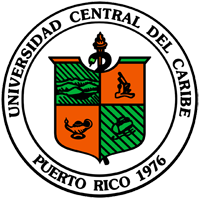Since its discovery in 1895, X-rays have become an indispensable tool in the diagnosis of health conditions. A simple radiograph is probably the front door for many individuals into the health system. Conventional radiology is still the first step in a long ladder of modalities designed to produce medical diagnostic images.
Profile of a Radiologic Technologist
A Radiologic Technologist is the health professional that produces diagnostic images through the utilization of specialized equipment working with ionizing radiation and other electronic means. He/she is responsible for producing quality images, gathering patient history/information and submitting his findings to a certified physician for analysis and diagnosis. The Radiologic Technologist will provide services to patient/clients in the most variable of settings, ranging from hospital, Diagnostic and Treatment Centers and stand-alone offices, public or private.
The Radiologic Technologist is responsible for assuring the safety and well-being of the patient / client under his charge and, as a member of the health professional team, has the additional responsibility of educating, supporting and serving his/her patient/client.
The Radiologic Technologist is capable of:
Evaluating the patient’s medical and clinical information in order to follow the prescribed radiographic procedure.
Utilizing discrete and valorative judgment in the operation of specialized equipment and performance of radiographic procedures.
Performing radiographic procedures to achieve quality images that include unequivocal diagnostic information of the anatomic structure and of possible pathologic conditions.
Assisting the Radiologist in those invasive procedures requested or needed to fully evaluate functional conditions.
Facilitating the diagnosis by integrating medical information, clinical history and the images produced.
Orienting patients about the radiographic procedures and on healthy life styles.
Integrating quality assurance procedures to his/her professional duties as to maintain a consistent excellence level in performance.
Performing his/her duties in such a way that due respect and empathy for the human being prevails.
Educational Program
This program comprises three academic years (six semesters), divided into closely-related periods of didactic and clinical practice. The curriculum was designed based on the curricular recommendations of the American Society of Radiologic Technology and the Joint Review Committee on Education in Radiologic Technology. These two institutions standardized education and accreditation of all programs in Radiologic Technology in the United States. It is important to point out that we have adjusted the curriculum recommendations in order to comply with their requirements while meeting local regulations, and in accordance with the needs and realities of the Puerto Rican community.
The Program’s Curriculum is designed in such a way that the balance between didactic and clinical requisites changes as the student progresses in training, increasing clinical responsibilities as the student approaches completion of the program. This system allows the student to adapt to professional life and at the same time achieve a more ordered transition towards entry-level work upon completion of training.
FIRST YEAR |
|
First Semester |
Second Semester |
CN-101: Fundaments of Science: Chemistry/ Physics) (3)CP-101: University Life (NC)EN-101: English I (3)MT-101: Fundaments in Mathematics (3)RT-110: Introduction to Computer Systems (3)SP-101: Spanish I (3)(Credits per semester: 15) |
EN-102: English II (3)RT-101: Introduction to Radiologic Technology (3)RT-103: Human Anatomy and Physiology I (3)RT-216: Basic Patient Care (3)SP-102: Spanish II (3)(Credits per semester: 15) |
SECOND YEAR |
|
First Semester |
Second Semester |
RT-104: Human Anatomy and Physiology II (3)RT-107: Principles of Radiographic Exposure (2)RT-111: Radiologic Physics (3)RT-113: Radiographic Procedures and Evaluation I (3)RT-202B: Clinical Practice I (2)(Credits per semester: 13) |
RT-108: Principles of Image Acquisition and Processing (2)RT-211: Radiation Biology (3)RT-213: Radiographic Procedures and Evaluation II (3)RT-203B: Clinical Practice II (2)RT-303: Sectional Anatomy (3)(Credits per semester: 13) |
THIRD YEAR |
|
First Semester |
Second Semester |
RT-115B: Radiologic Pathology (3)RT-204: Clinical Practice III (3)RT-316: Advance Patient Care (3)RT-314: Radiographic Procedures and Evaluation III (2)RT-315A: Legal Concepts Seminar (1)(Credits per semester: 12) |
RT-205: Clinical Practice IV (4)RT-320: Radiographic Quality Assurance (4)RT-350: Review for Professional Credentialing Exam (1)RT-414: Introduction to Imagining Modalities (3)(Credits per semester: 12) |
Total credits – 80 |
|
After the student completes all academic and administrative requirements he/she receives the Associate in Science Degree in Radiologic Technology and is eligible to sit for the Puerto Rico Radiology and Radiotherapy Technologists Examination Board and the American Registry of Radiologic Technologists tests.
